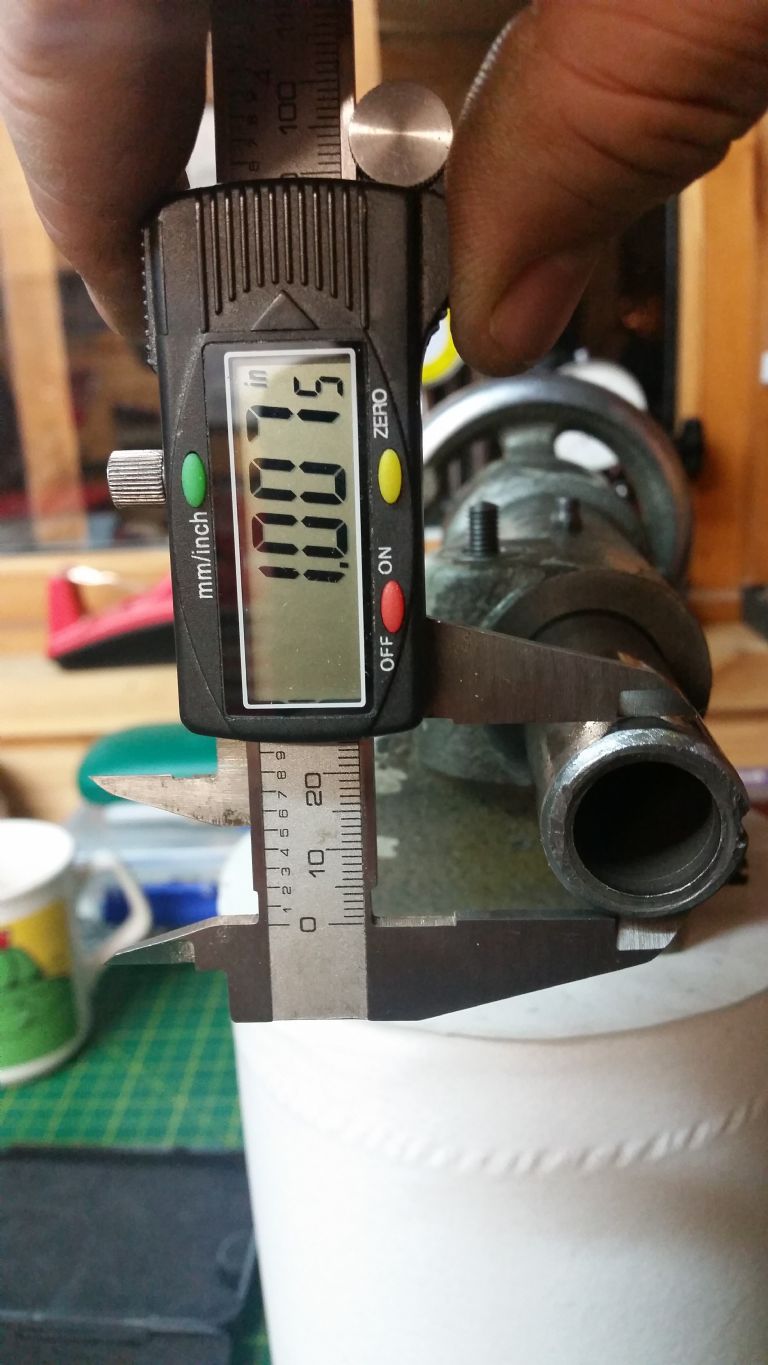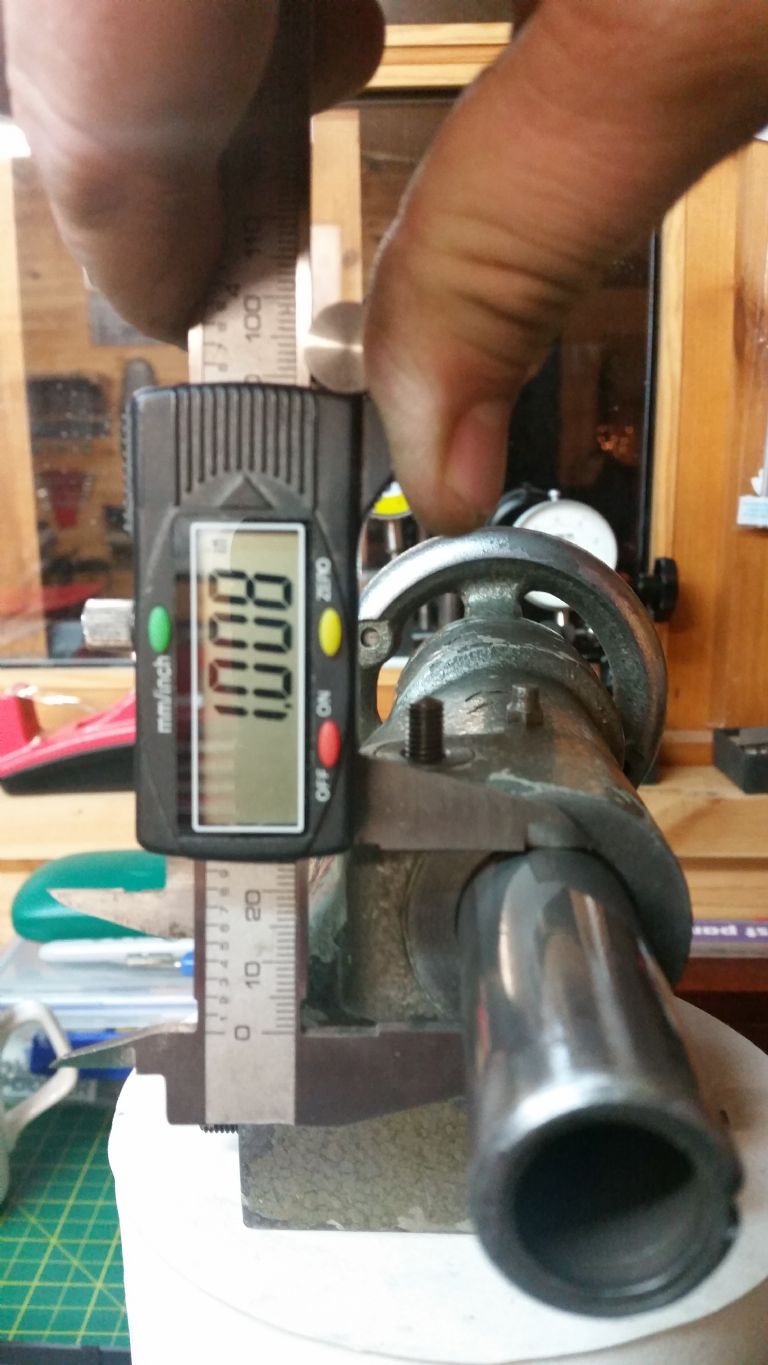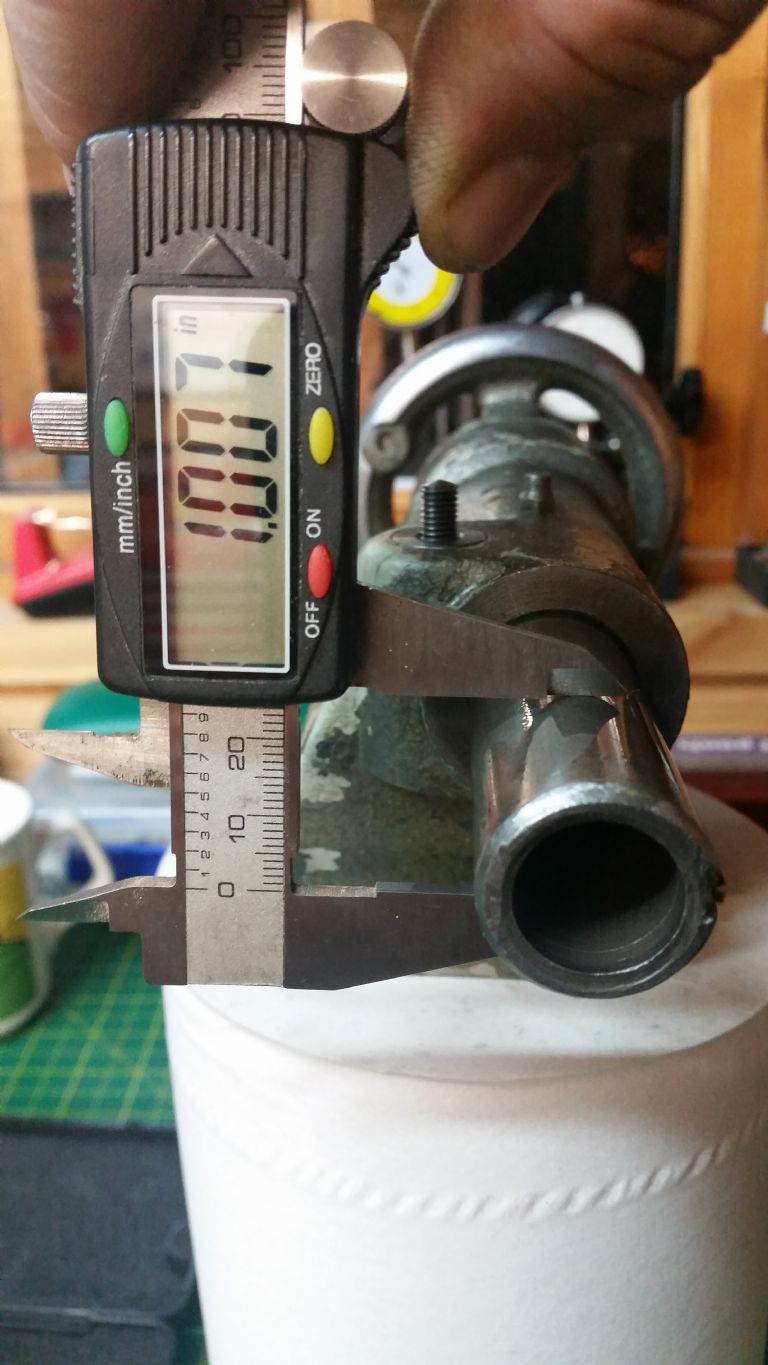Posted by Dave Springate on 12/02/2019 20:17:40:
Well, that was a productive evening, I started to strip the tailstock down again and unscrewed the lock handle and notice that the barrel that is underneath it was not freeing up when you loosen the locking lever. I took it out and have lightly rubbed all the edges with a bit of emery paper and cleaned it, put it back in and hey presto it's working as it should now the quill now has a nice smooth action. I've re-measured the quill avoiding the key groove and got a better measurement, sorry I don't own a micrometer yet so the cheapo digital caliper will have to do.
now the quill now has a nice smooth action. I've re-measured the quill avoiding the key groove and got a better measurement, sorry I don't own a micrometer yet so the cheapo digital caliper will have to do.
…
Well done, now you're an expert on ML10 tail-stocks!
I think your experience is typical of the fog through which new things are learned in an amateur workshop. Step one, an item of machinery that needs attention, perhaps it's broken, perhaps it just needs a clean and lube job. Step two, the discovery that how a machine works, how it's disassembled, and how it goes back together isn't always obvious. It might even be painfully difficult! Step three: experimenting, taking advice, and frustration. This is the dangerous stage: people reach for hammers, lose parts, and make horrible bodges. This is one reason it's important to check old lathes out before buying them – you don't know who else has been 'at it'. Step four – daylight. Once the machine is understood, or you guess correctly, it's easy. Step 5 – having done something like this before, you just get on with it, what problem?
Few tricks that may help. Don't underestimate the difficulty of a first attempt. Take the machine apart in an uncluttered area and put parts into trays that suggest the order in which they were removed. Take lots of notes and photographs – digital cameras make pictures cheap and easy. Have a good think and/or take advice before doing anything that requires force. Try and keep a sense of proportion – if something won't go back together and you don't quite know what you're doing, the most likely cause of the problem is you! If getting annoyed stop for a cup of tea. When severely irritated, take the day off.
On the subject of cheapo Digital Calipers, don't worry. They're good for most straightforward measurements in average workshops. Like as not a cheap model will be as accurate as an expensive one. Better calipers have other advantages – they don't lose zero (not having to keep checking and resetting them is important when time is money, less so to us amateurs), they have a smoother more reliable action, and – perhaps – better battery life. A positive advantage of cheap calipers is they can be cheerfully mistreated and replaced. Unlike an expensive caliper that stays permanently in a box because it's too good to use! When precision is important – like checking a suspect quill – a micrometer is more accurate than any caliper.
Good luck
Dave
Dave Springate.







